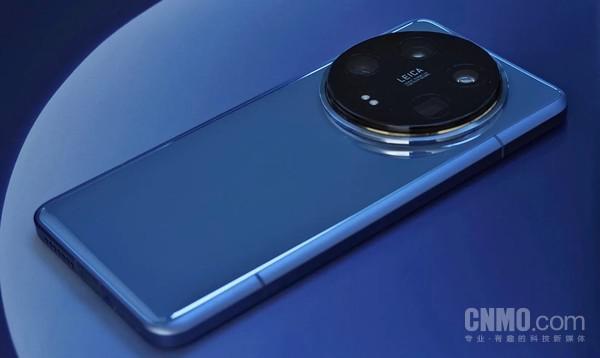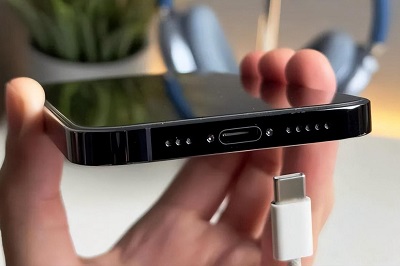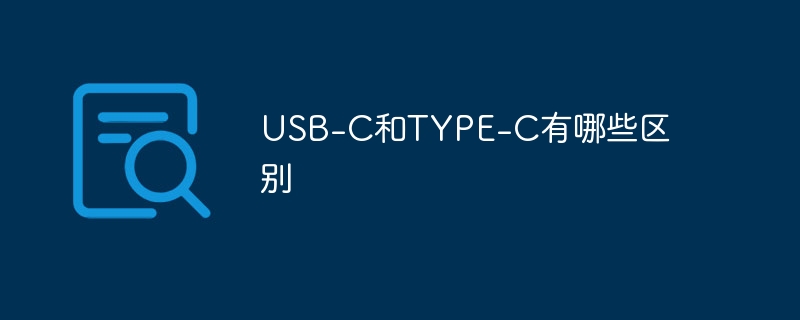The differences between usb-c and type-c are: 1. USB-C is versatile and supports the connection of various USB devices, while Type-C has stronger compatibility and supports the connection of multiple USB devices; 2 , USB-C has the characteristics of high-speed transmission, while Type-C has a faster transmission speed; 3. USB-C is small and light, while Type-C has a smaller size; 4. USB-C is pluggable, while Type-C -C enables more convenient charging and data transmission.

USB-C and Type-C are two different interface types, with different characteristics and application scenarios. The following is the comparison and difference between USB-C and Type-C.
USB-C is a universal, high-speed, compact interface type. It has the following characteristics:
1. Versatility: The USB-C interface can connect to various types of devices , including computers, mobile phones, tablets, mobile storage devices, monitors, etc. It supports the connection of various USB devices, including USB devices, USB-C devices, HDMI devices, DisplayPort devices, etc.
2. High-speed transmission: The USB-C interface has a transmission speed of up to tens of GB per second, which is much faster than the traditional USB interface. This means large amounts of data and files can be transferred faster.
3. Small and light: The size of the USB-C interface is 8.3mm x 2.65mm x 1.08mm, which is much smaller and lighter than the traditional USB interface. This makes it more portable and easy to carry.
4. Pluggable: The USB-C interface can achieve a pluggable design, which means that the interface can be easily replaced or unplugged. This is very convenient for devices that need to frequently change interfaces.
Type-C is a new type of USB interface. It has the following characteristics:
1. Smaller size: The size of the Type-C interface is 8.3mm x 2.65mm x 1.08 mm, the same as the USB-C interface. This makes the Type-C interface smaller and lighter.
2. Faster transmission speed: The transmission speed of the Type-C interface can also reach tens of GB per second, which is the same as the USB-C interface. At the same time, the Type-C interface also supports multiple transmission speeds, including USB 3.1, USB 3.2, USB 4, etc.
3. Stronger compatibility: The Type-C interface supports the connection of a variety of USB devices, including USB devices, USB-C devices, HDMI devices, DisplayPort devices, etc. At the same time, the Type-C interface can also serve as a charging port for USB devices and can provide charging services for various USB devices.
4. More convenient charging and data transmission: The Type-C interface can also realize USB-C to USB charging and data transmission, which means that various USB devices can be charged through the Type-C interface. Data can also be transferred from USB-C devices to USB-A devices via a USB-C to USB cable.
In short, USB-C and Type-C are two different interface types, with different characteristics and application scenarios. The USB-C interface has the characteristics of versatility, high-speed transmission, compactness, thinness, and pluggability, and is suitable for connecting and charging various USB devices. The Type-C interface has the characteristics of smaller size, faster transmission speed, stronger compatibility and more convenient charging and data transmission, and is suitable for devices that require high-speed transmission and charging. When selecting an interface type, you need to select an appropriate interface type based on your own needs and device characteristics.
The above is the detailed content of What is the difference between usb-c and type-c. For more information, please follow other related articles on the PHP Chinese website!
 春日里的精致光影艺术,哈趣 H2 性价比之选Apr 17, 2024 pm 05:07 PM
春日里的精致光影艺术,哈趣 H2 性价比之选Apr 17, 2024 pm 05:07 PM随着春天的到来,万物复苏,一切都充满了生机与活力。在这个美好的季节里,如何为家居生活增添一抹别样的色彩?哈趣H2投影仪,以其精致的设计和超高的性价比,成为了这个春天里不可或缺的一道亮丽风景。这款H2投影仪小巧玲珑却不失时尚。无论是放在客厅的电视柜上,还是卧室的床头柜旁,都能成为一道亮丽的风景线。它的机身采用了奶白色的磨砂质地,这种设计不仅让投影仪的外观更显高级,同时也增加了触感的舒适度。米色仿皮纹材质,更是为整体外观增添了一抹温馨与雅致。这种色彩与材质的搭配,既符合现代家居的审美趋势,又能够融入
 外媒分析小米 14 Ultra 六大优缺点:无 3.5mm 插口被吐槽Mar 02, 2024 pm 12:07 PM
外媒分析小米 14 Ultra 六大优缺点:无 3.5mm 插口被吐槽Mar 02, 2024 pm 12:07 PM【CNMO科技消息】在广阔的智能手机领域,每款机型都有自己的优点和缺点。据CNMO了解,近日有外媒对小米14Ultra进行了全面评测,包括其相机实力、显示效果、性能表现、多媒体功能和电池续航等,最后总结出了六大优缺点。其中,没有(极为先进的)3.5mm耳机插口居然成了吐槽点。小米14Ultra优点顶级相机配置:小米14Ultra采用徕卡镜头加持的四摄系统,提供丰富的拍摄能力,适合各种摄影场景。从超广角镜头到潜望式长焦,都能保证出色的图像质量和创意灵活性。高品质显示屏:小米14Ultra拥有大尺寸
 type-c是谁的专利Jul 01, 2021 am 10:45 AM
type-c是谁的专利Jul 01, 2021 am 10:45 AMTYPE-C不属于哪家的专利,这是一个通用标准,生产电子产品的厂家都能用。USB接口有三种不同外观的接口,即Type-A、Type-B、Type-c,Type-C拥有比Tpe-A及Type-B均小得多的体积,是最新的USB接口外形标准。
 小米 14Ultra 摄影手柄使用时会一直给手机充电?官方已优化Mar 05, 2024 pm 07:30 PM
小米 14Ultra 摄影手柄使用时会一直给手机充电?官方已优化Mar 05, 2024 pm 07:30 PM小米14Ultra在发布时推出了一款全新升级的小米专业摄影套装,但在上市后,一些用户使用时遇到了一些问题。官方产品经理今天发文表示,已经对这些问题进行了优化处理。小米手机产品经理汇总了最近关于摄影手柄的热门问题和解答。用户反馈的一些问题包括增加充电控制开关以及偶尔出现的低电量导致连接断开的问题。目前,团队正在优化解决这些问题,并计划在确认OTA更新时间后向用户发布同步更新。像部分用户反馈的即使手机100%满电关机、插着摄影手柄还是默认充电一直掉电问题,官方针对性改进措施就是增加充电控制开关。作为
 什么是typec数据线Mar 30, 2023 pm 05:06 PM
什么是typec数据线Mar 30, 2023 pm 05:06 PMtypec数据线指的是使用USB Type-C作为接口的数据线。type-c是一种全新的USB接口形式,从外形功能上看,它的特点是不用区分正反,两面都可插,是一个对称扁圆形。Type-C采用USB3.1标准,是USB标准化组织为了解决USB接口长期以来物理接口规范不统一,电能只能单向传输等弊端而制定的全新接口,它集充电,显示,数据传输等功能于一身。
 苹果15type-c和安卓通用吗Mar 08, 2024 pm 03:04 PM
苹果15type-c和安卓通用吗Mar 08, 2024 pm 03:04 PM苹果15type-c和安卓的C口都是通用的,苹果15也是在这一次全面替换成了type-c接口,替代了老的接口,这个接口是通用的,支持市面上的大部分type-c数据线,用户可以放心使用。苹果15type-c和安卓通用吗答:通用的1、用户如果购买了苹果15手机,可以放心的使用安卓手机的type-c线。2、苹果15手机在这一代全面使用了最新的type-c接口,放弃了老的闪电接口。3、用户需要注意的是,虽然type-c线都是通用的,但是也是有速度之分。4、可能部分比较廉价的劣质type-c线无法使用,也
 USB-C和TYPE-C有哪些区别Dec 20, 2023 am 10:28 AM
USB-C和TYPE-C有哪些区别Dec 20, 2023 am 10:28 AMUSB-C和TYPE-C的区别:1、物理形态;2、传输协议;3、传输速度;4、双向/单向传输;5、兼容性;6、功能。详细介绍:1、物理形态,USB-C和Type-C的物理形态基本一样,都是8个针脚,大小也相同,可以互相兼容,但是,在连接方式上,USB-C是上下插拔,而Type-C可以正反插拔;2、传输协议,USB-C支持多种传输协议,而Type-C只支持USB 3.1等等。
 ipadpro充电口是type-c吗Dec 01, 2022 pm 02:45 PM
ipadpro充电口是type-c吗Dec 01, 2022 pm 02:45 PMiPad Pro是Type-C接口,充电头也是Type-C接口;iPad Pro 2021分为11英寸和12.9英寸两种版本,颜色有深空灰色和银色两种颜色可选,搭载最新的M1芯片,后置一颗1200万像素广角摄像头和一颗1000万像素超广角摄像头,前置采用一颗1200万像素深感摄像头,支持人物居中和面容ID。

Hot AI Tools

Undresser.AI Undress
AI-powered app for creating realistic nude photos

AI Clothes Remover
Online AI tool for removing clothes from photos.

Undress AI Tool
Undress images for free

Clothoff.io
AI clothes remover

AI Hentai Generator
Generate AI Hentai for free.

Hot Article

Hot Tools

SublimeText3 English version
Recommended: Win version, supports code prompts!

Safe Exam Browser
Safe Exam Browser is a secure browser environment for taking online exams securely. This software turns any computer into a secure workstation. It controls access to any utility and prevents students from using unauthorized resources.

Zend Studio 13.0.1
Powerful PHP integrated development environment

DVWA
Damn Vulnerable Web App (DVWA) is a PHP/MySQL web application that is very vulnerable. Its main goals are to be an aid for security professionals to test their skills and tools in a legal environment, to help web developers better understand the process of securing web applications, and to help teachers/students teach/learn in a classroom environment Web application security. The goal of DVWA is to practice some of the most common web vulnerabilities through a simple and straightforward interface, with varying degrees of difficulty. Please note that this software

mPDF
mPDF is a PHP library that can generate PDF files from UTF-8 encoded HTML. The original author, Ian Back, wrote mPDF to output PDF files "on the fly" from his website and handle different languages. It is slower than original scripts like HTML2FPDF and produces larger files when using Unicode fonts, but supports CSS styles etc. and has a lot of enhancements. Supports almost all languages, including RTL (Arabic and Hebrew) and CJK (Chinese, Japanese and Korean). Supports nested block-level elements (such as P, DIV),






